I was robbed!
At a weak moment I agreed to skip the 350km journey to Mark Rothko’s birthplace museum/gallery which would have been our last jaunt in Latvia.
I’m no art aficionado. I can’t pretend to understand a lot of what I see. However Rothko’s work was the first abstract art that I loved with no understanding of what it was showing me.
My statement isn’t fair.
I was tired, a bit emotional, but I did look at the map and decide that the extra miles to Daugavpils weren’t worth the cost and effort.
Instead we skipped across the border into Lithuania to head for my next point of obsession – The Hill of Crosses, Siauliai.

We weren’t disappointed.
The Hill of Crosses. Siauliai.
Here’s the contrast.
We woke in the grounds of the Baltic’s most wonderful and glamorous mansion.
We drove a couple of hours.
We parked up in the grounds of a monastery.
That monastery’s church had a window onto one of mankind’s most curious creations.

The Hill of Crosses.
History, as ever, is unclear as to when crosses started to appear on the hill a few kms outside of Siauliai (Silly Wally in Minty speak), but it is certain that they seriously upset the Soviets during their period of power.
At least three times during the Soviet rule the crosses were cleared, and in 1972 the whole hill was bulldozed.
Immediately after crosses began to appear again.
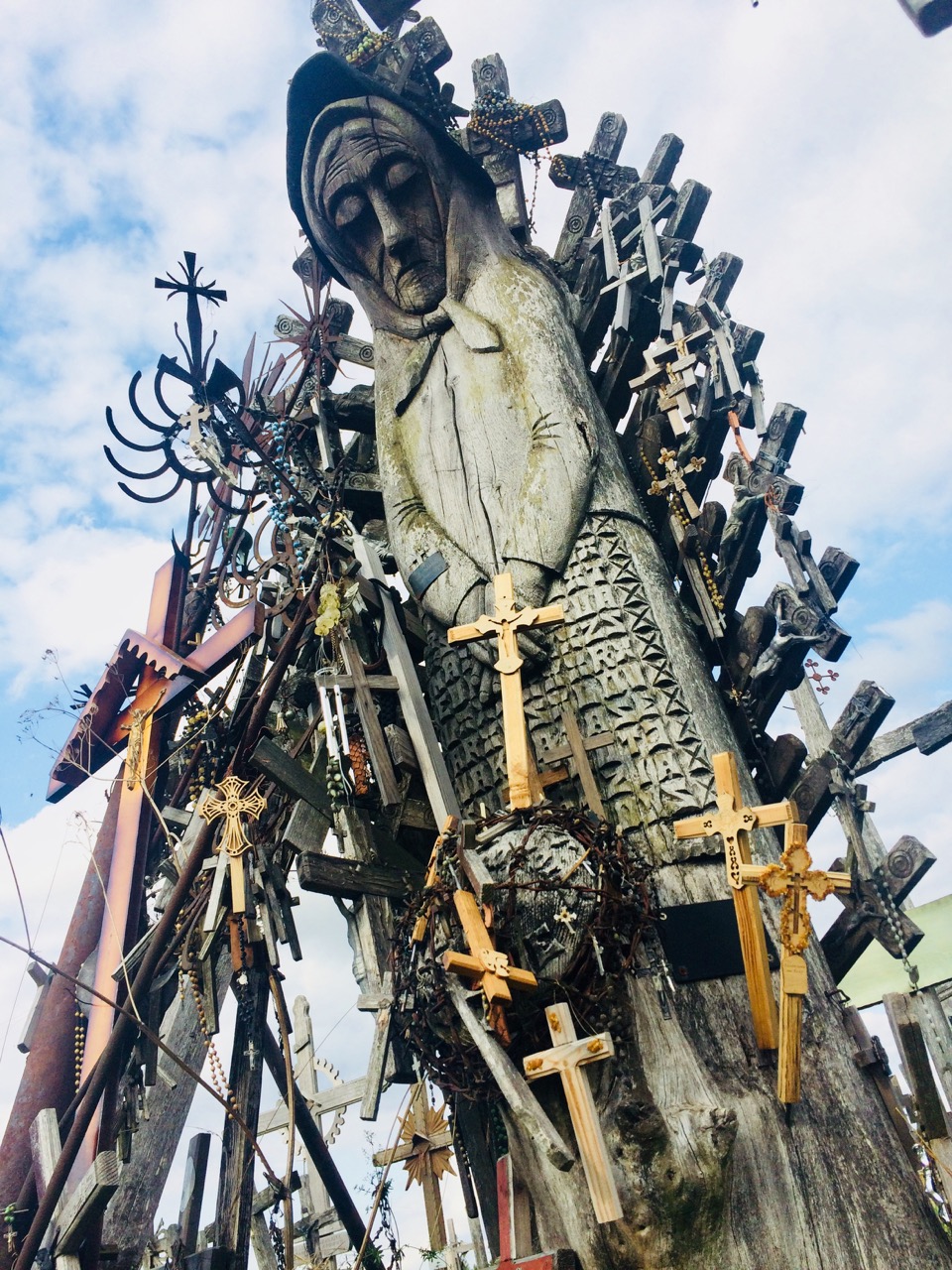
After the fall of the USSR even the Pope (JPII) came along, and his immodest pulpit still stands.
Today this strange religious site, that was determined by the people not the church, holds an estimated 200,000 crosses, and the number is growing fast.
We first glimpsed the hill from the monastery that was founded only recently, following the Pope’s visit.
Afterwards we wandered the few hundred meters to the hill itself.
What a strange and wonderful place it is.
As with so many public sites there is no fee to enter – you just walk up and fill your eyes.
The crosses, planted by anyone with faith and the desire, climb from the fields to the hill itself, and are gradually growing outwards in every direction.

Most are simple. Many bought from the visitor centre. But some are major artworks in themselves.
For added effect we slept in the grounds of the monastery where a stork couple were engaging in their courtship display every couple of hours. That would have made our day without the crosses, but as it was it was a huge bonus.
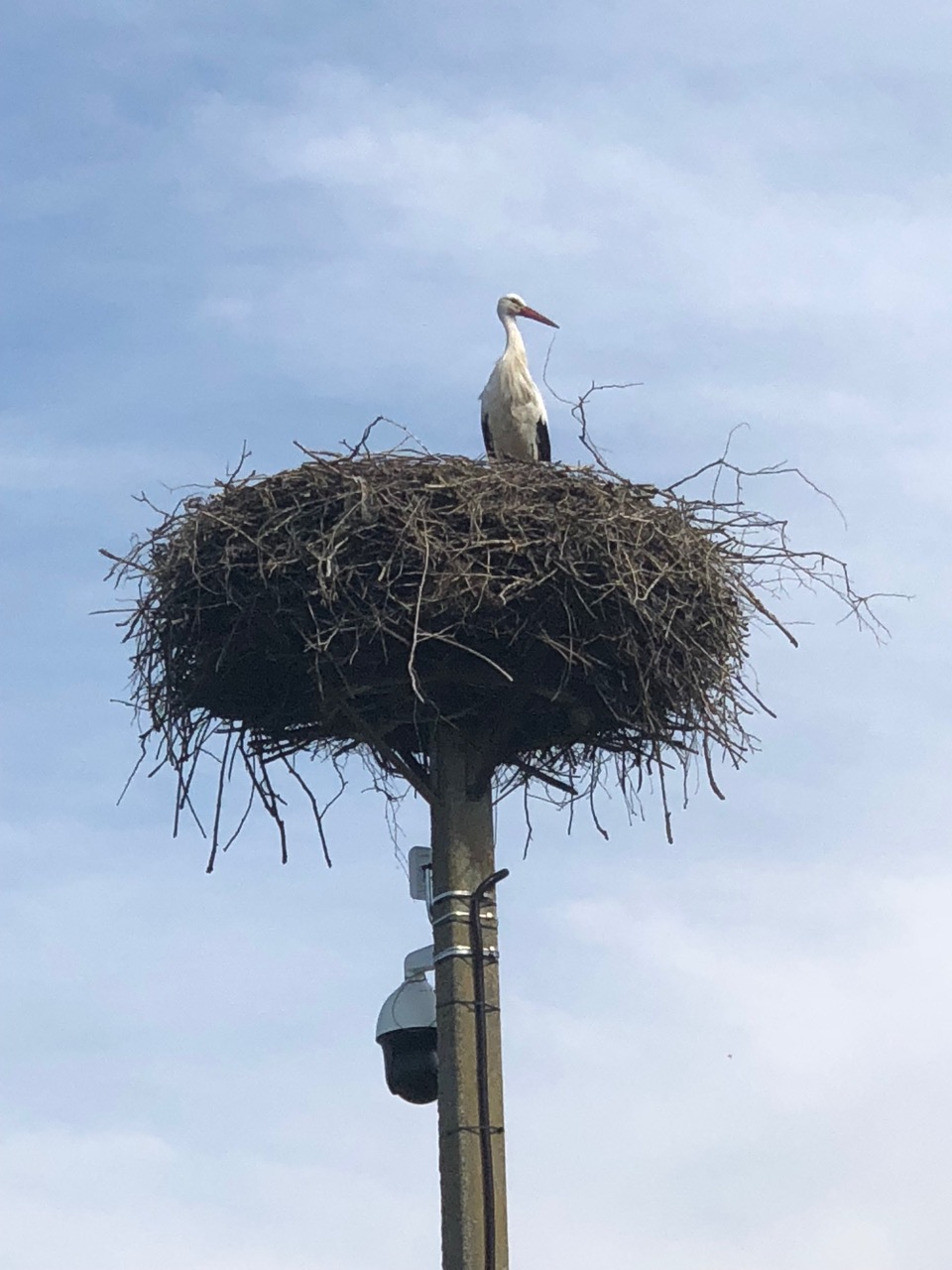
Lake Plateliou, Zemaitijos National Park.
Plokstine.
A sparsely populated forest village near a lake.
The ideal place to site four Soviet nuclear missiles with enough power to wipe out the whole of Western Europe.
And of course, they didn’t tell the locals.
The former base is now a museum where we joined the hundreds of people underground.
Although it’s only a series of bunkers, the four silos poking above ground are chilling reminders of the crazy Cold War that held everyone in fear of Armageddon pretty much from the end of World War II until the early 90s.

Do you remember the leaflets and videos telling you what to do in the event of a nuclear attack? And can you imagine the horror if you did survive, even for a week?
Here the small team, who were on standby night and day, might well have been responsible for wiping mankind (and most other living things) off the face of the earth. Yet they were still the lucky ones with a relatively soft posting.

The tour ends with a climb up into the viewing area of one of those silos.
Holy shit!

Calm.
Back at the lakeside life was considerably more relaxed.
Unlike most of the lakes we’ve seen since Norway, this has a decent depth, and a lovely sandy shore (squidging through mud is enough to put Amanda off getting near the water of most lakes).
People were already in high spirits, and a wedding nearby ensured there was no peace until after 6.30am, but everyone was happy and smiling and we joined in (some) of the fun.
In the pleasant beer garden opposite where we’d set up camp I applauded one of four tough looking lads as he took a bottle of JD from his rucksack. It was enough to gain us new friends. He insisted on tipping a huge slug of rye into my beer – and I discovered that Jack Daniels and beer is remarkably palatable.
It also knocks your balance for six!
The wedding couple were greeted by two old fellows in traditional costume bearing muskets that they enjoyed firing with deafening bangs. The two old boys then plied the guests, and us, with home made vodka that our new mates assured us was around 65% proof.

My god it was good!
Things got more fun as the litre of JD rapidly disappeared.
I tried to buy them beers but the main man came along and told the barman not to charge me.
Interesting.
They turned out to be ship builders, and probably fearsome characters.
Definitely men who you’d prefer to be friends with.
It was one of those moments that may have been a brush with death, but which was a lot of fun and we’ll laugh about for years to come.

Soup à la van.
In the van, barely able to stand, I made the best tomato soup yet, this time with cannellini beans for bulk and protein.
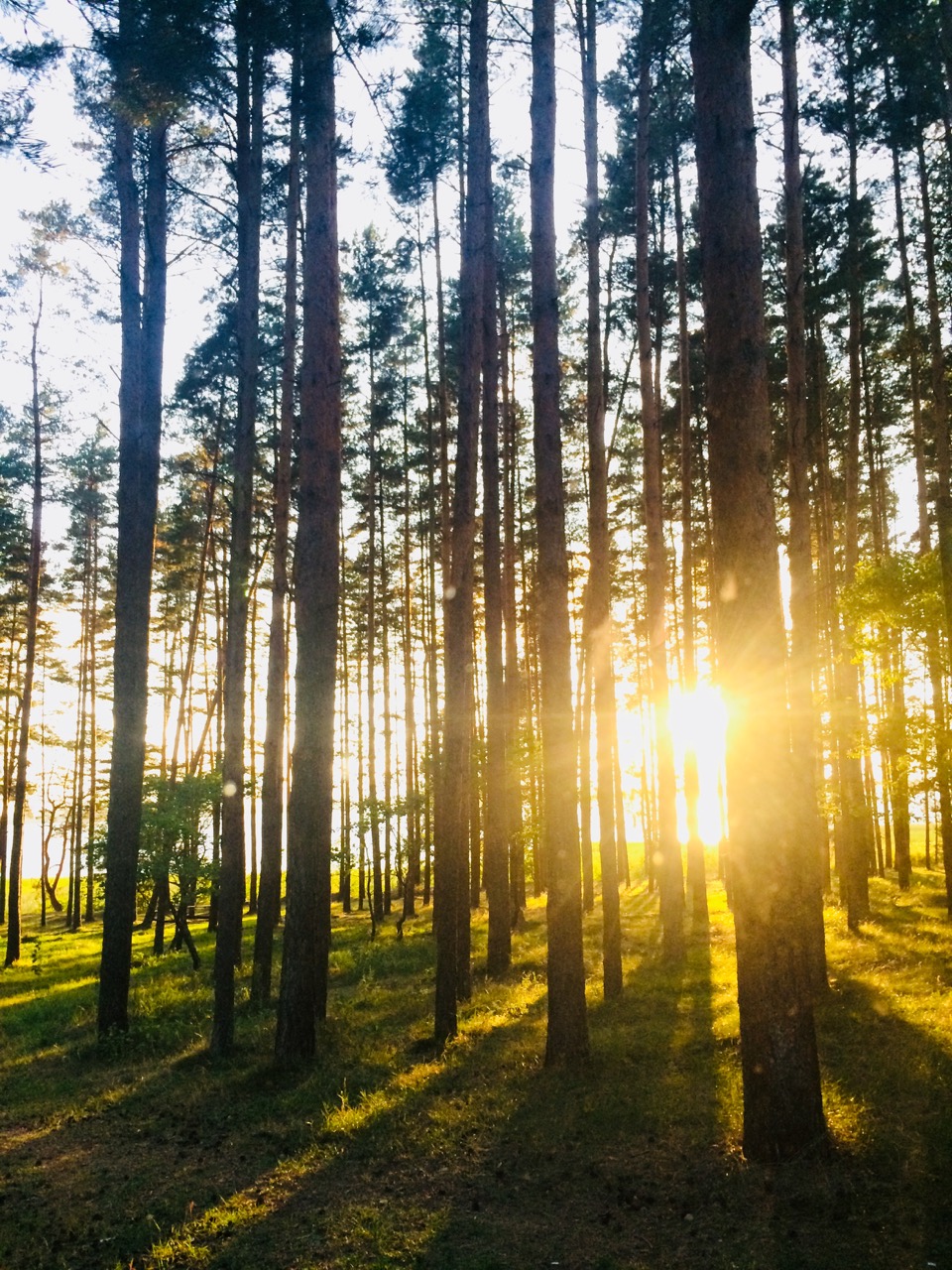
And somehow we had a decent sleep despite the festivities all around us.
Sunday was decidedly gentle.
Klaipeda.
We’re now dockside in Klaipeda from where we’ll get a little ferry onto the Curonian Spit in the morning.

It’s Lithuania’s third city, but it’s no Manchester. The population is around 161,000, and the proportion of Audi Q7s (starting price £55k) is high. There are also many monster Mercedes, BMWs and Range Rovers – and loads of kids in older versions of the above who race around the streets at crazy speeds through night (OK, that’s quite like Manchester).
It’s the only port that can take huge cruise ships and so the town is flooded with short stay visitors on a regular basis.
We ended up staying two nights and that gave poodle and I a chance to explore quite a bit, seeing smart squares, much public art, cool new flats and rough old Soviet ones too.
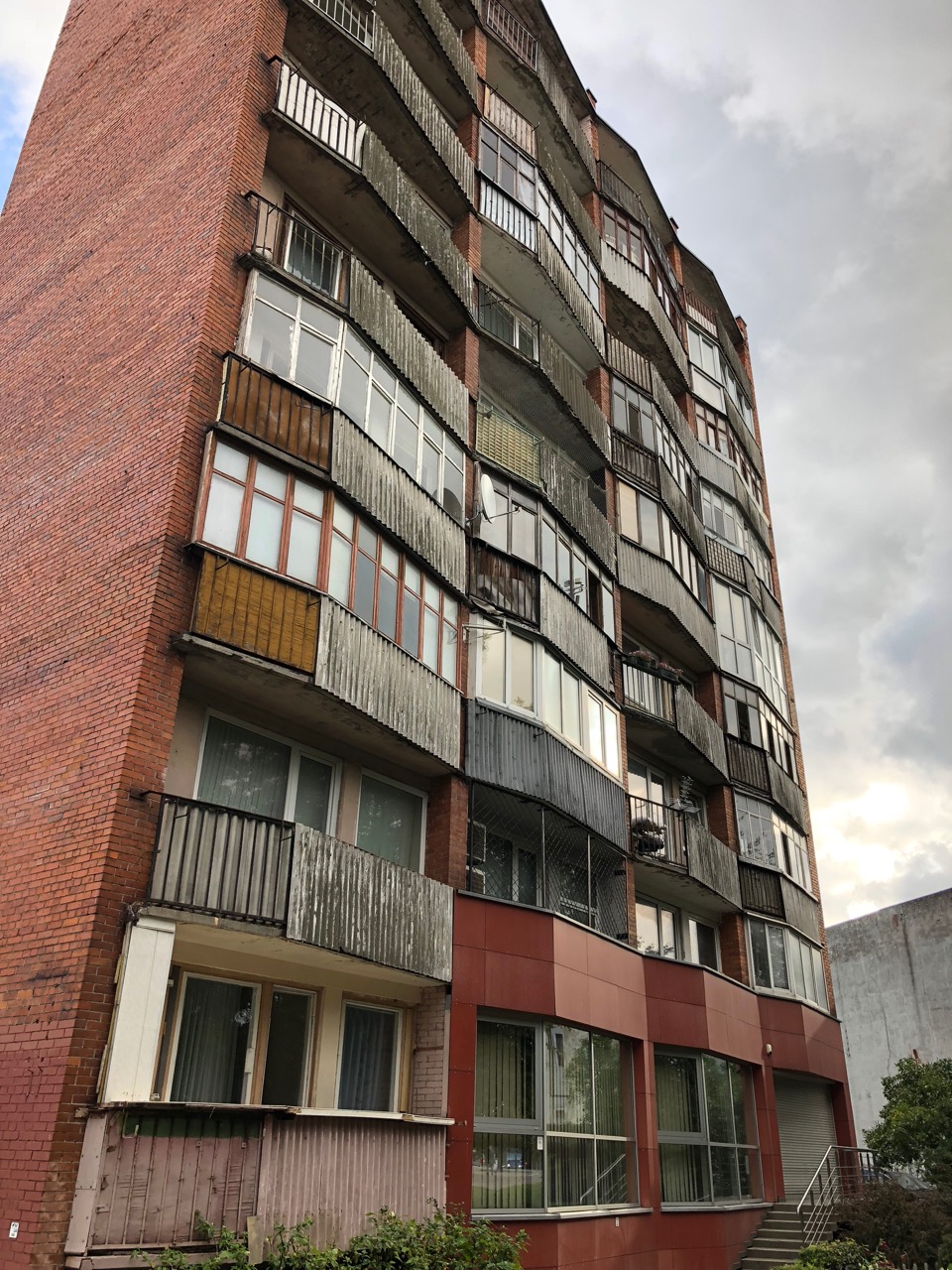
The sheer amount of public art in these new European states is surprising. I guess a hell of a lot of money went into them to kick start their economies in the 90s, and now that money has filtered down to those swanning around in flash cars. You do occasionally come across smart houses as well, but not often.
The Curonian Spit.
Part natural, part man made, the spit is a narrow stretch of dune that reaches up 90kms or so from the Russian town of Zelenogradsk in the south to all but touch Klaipeda in the north. Since the mid-1700s planting has been managed to help anchor the sands and it’s now a pleasant stretch of woodland with the sea on one side and the lake only a few hundred meters away on the other.
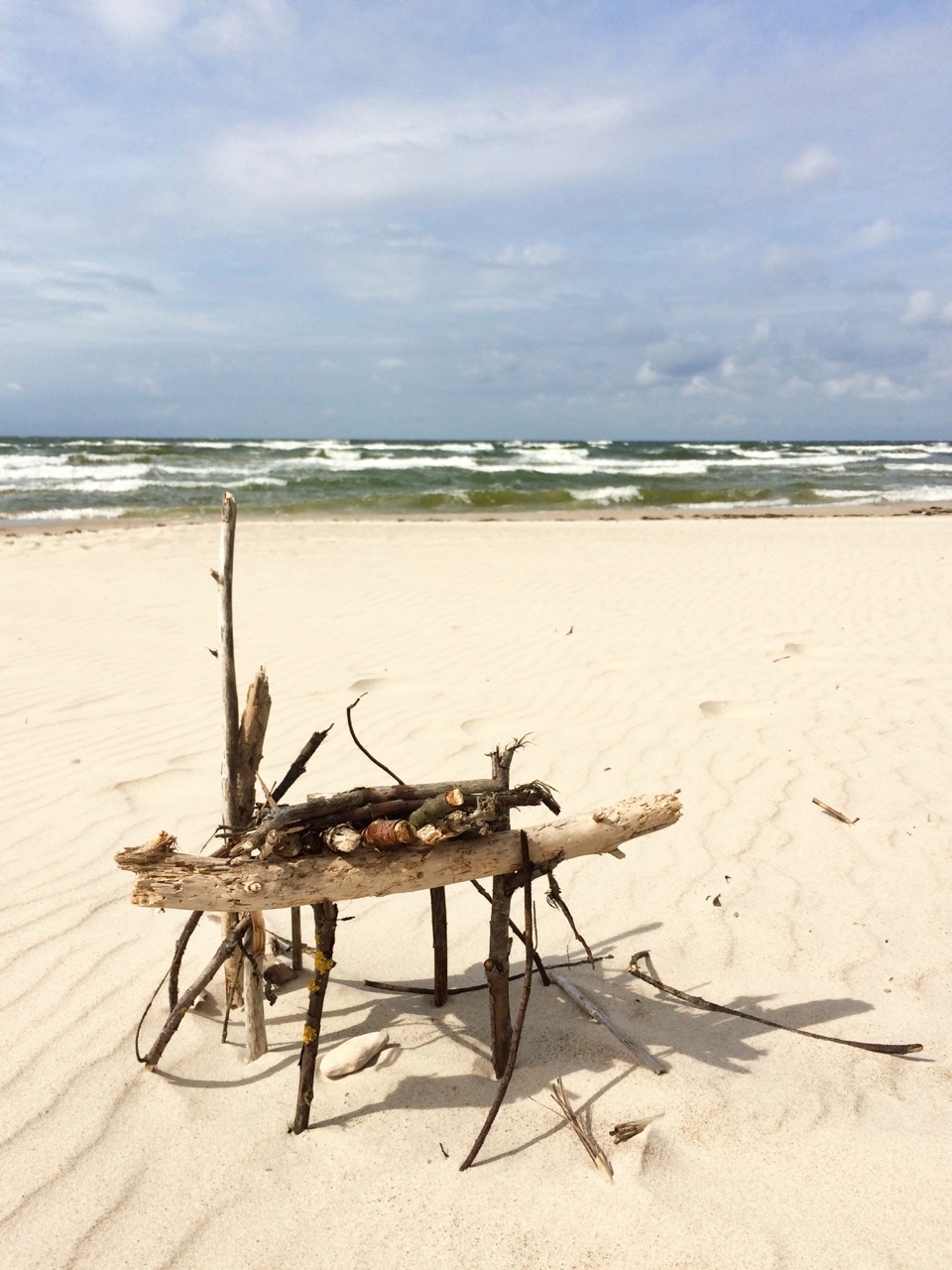
The spit was once German and it still attracts them in their droves. Thomas Mann used to summer in Nida. It was the first time in a while that we’ve seen a mass of D plates, or in fact any foreign cars.
The down side is that it costs €24 on the very short ferry, and then there’s a €30 road toll too. There are good beaches north of the city that are free to visit, but the spit does hold more interest so it’s worth it – but only just.
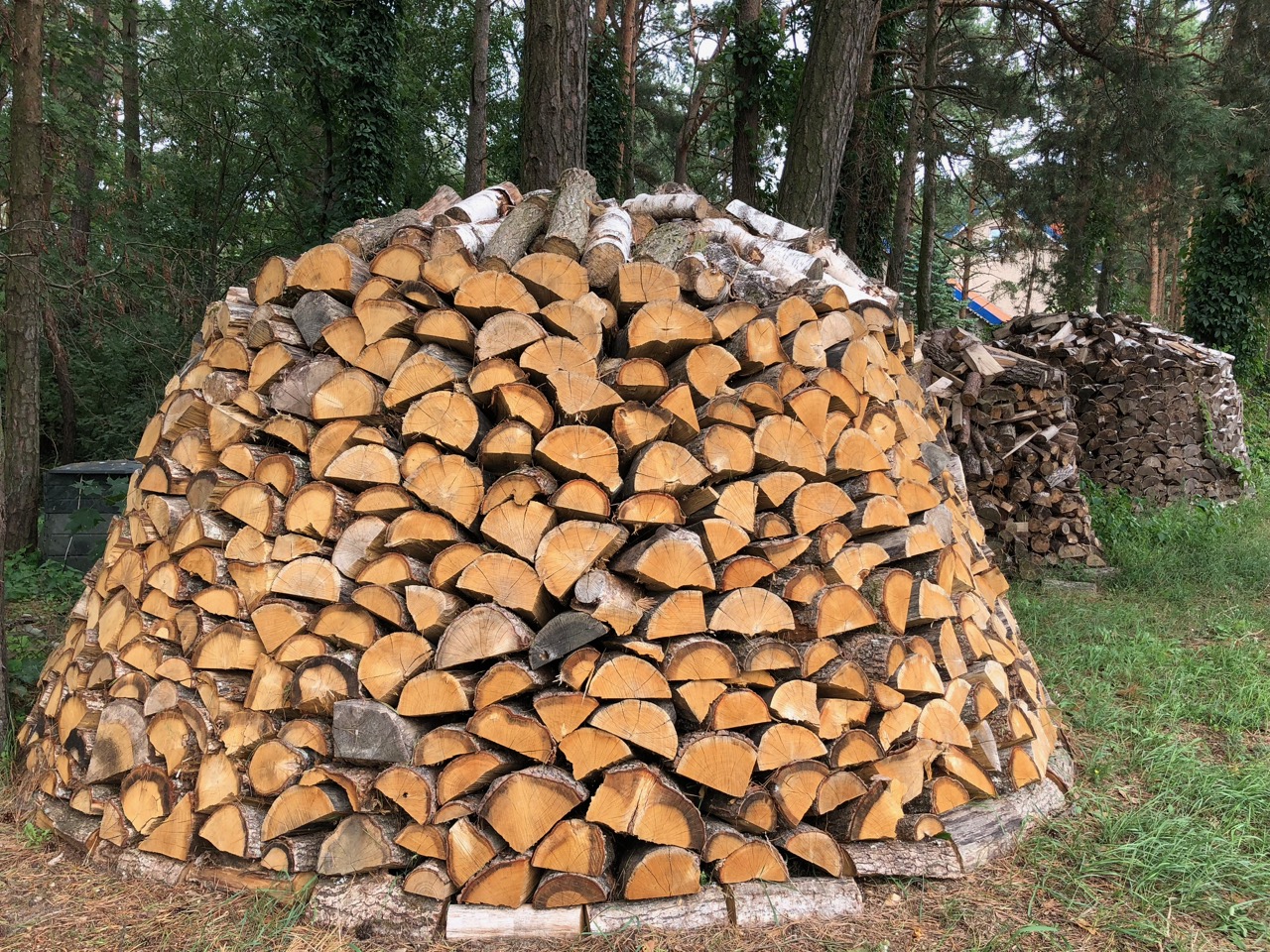
Local road systems.
Across the Baltic states it’s the roundabouts that are the most challenging. Sometimes lanes will have raised barriers between them and their signs are pretty mad.
In Klaipeda there’s a new one on us too. Many traffic lights have a green arrow bolted onto the right side that seems to mean that you can filter right at any time, even if the lights are red.
In Kaunas there were roundabouts that still have the old style European priority to the right – so you give way to traffic entering the roundabout. Chaos!
Overtaking is a sport here.
While kids razz the streets at night with the loudest exhausts they can afford, people don’t generally drive fast.
They do like to overtake though and will do so at any opportunity. Solid white line? So what? Blind summit? Well, it makes it more fun. Once past they settle to a pace only a bit faster than the van.
Generally roads are pretty rutted, but dead straight for miles and miles, often without another vehicle in sight.
Where to sleep.
Lots of people ask how we find our spots to sleep.
It’s a well honed process, but can still go wrong.
Mindy is a fiendish consulter of the Park 4 Night app, one of many that share people’s parking spots. In the UK and Western Europe we used Search For Sites.
What one van might be comfortable with another might not like, and sometimes we arrive at a spot and know it’s not right for us.
If we don’t both feel good then we’ll move on.
We’ve parked in busy places (such as on the docks at Klaipeda where we are now), the maddest of which was the Fish Market in Hamburg, and in a city those busy spots are OK.
We’ve also parked in the most beautiful quiet woodland settings where we haven’t seen a soul.
The hardest so far was probably on the street in Brighton. But to see our friend JLC was worth it!
And the best? Well, there are so many great ones it would be impossible to name a favourite, but Scotland and Norway both stick in my mind for some great spots.
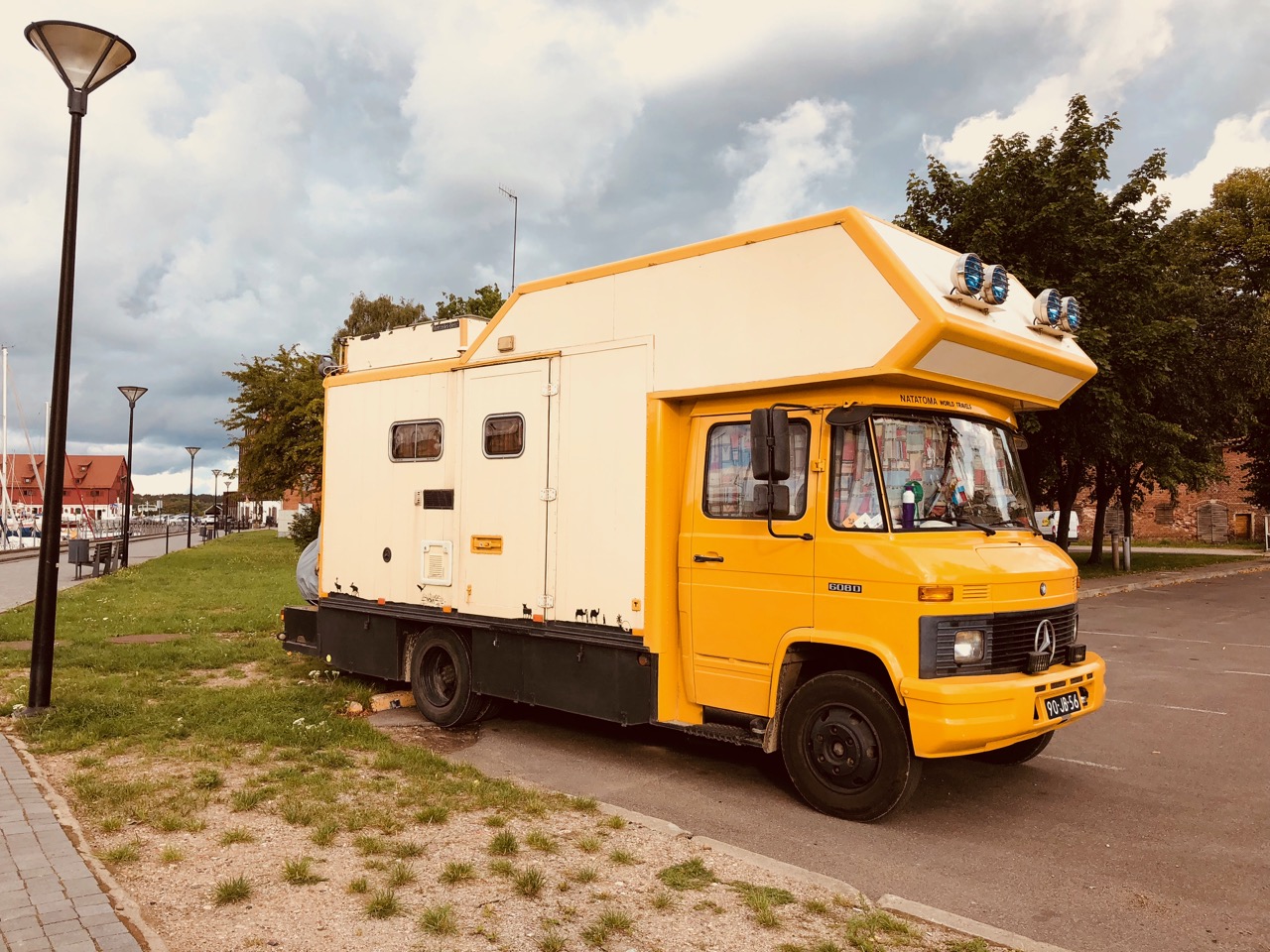
Jurbarkas.
Talk of stop over points leads to paid sites.
We budgeted for 50% camping on paid sites, but actually we stay on sites less than weekly. It’s a good thing that makes up for the cost of the higher than planned miles we drive.
However when we do pull into a site, have a shower, and kick back without thoughts of “Will we be safe?” or “Will we be moved on?” we’re very happy bunnies and almost always stay for two nights.
We’ve done so this afternoon.
With the chairs out and the calm settling in we are aware of how tiring it is to move on nearly every night.
Tonight we’re at a gorgeous site by a wide stretch of the Neman River. It’s green, clean and after a couple of hours bouncing along tired roads we’re as happy as we could be.
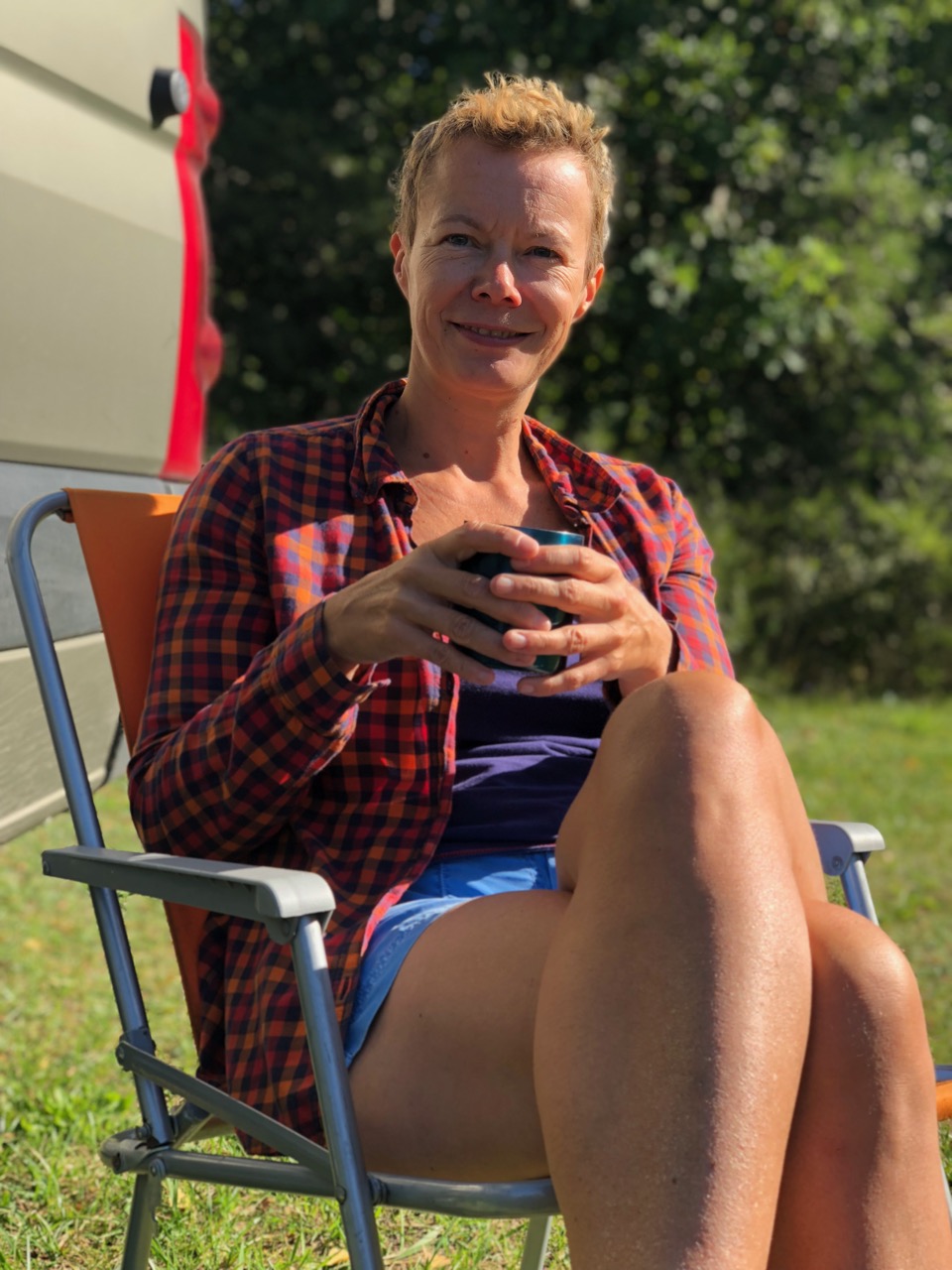
Honey Valley.
Medaus Slenis, or Honey Valley, is a mix of a couple of cabins, a big bunkhouse, and two large fields for vans and tents.
Interestingly most sites we have stayed at offer a decent kitchen – that would have been so welcome when I used to camp years back and have to lug cooking gear as well as tent, bulky sleeping bag etc.
At home running a campsite in any decent location should be hard work, but financially rewarding. Here I’m not sure the reward is as forthcoming. The season is July, and other summer weekends, and that’s about it. Tonight on a site that could easily swallow 60 vans and not look busy there are just five, in mid-August and during the best summer Europe can remember. I guess part of the issue is that there simply aren’t that many people in the country, and there are few tourists.

Population density.
In England there are (apparently) 427 people per square kilometre.
Here there are only 46.
Not much more than a tenth of the people in a given area.
So extrapolating rather more than a good teacher would allow – that means there are only a tenth as many people paying taxes per square km. Yet everything is pristine, there appear to be good public services, excellent facilities, and there is clearly strong civic pride. And few very beggars/rough sleepers.
How do they balance the books?
OK, I know that the above means that there are only a tenth as many draining the public purse too, but it’s interesting to consider.
Back on the bikes.
In glorious sunshine we mount our pedalled steeds again.
Before we set off Polly had a good swim leaving her wet and therefore cool for a few hours while we cycled off to Jurbarkas, the nearest town, along a mix of cycle path and road.
Wonderful.
It’s pretty flat around here and the cycle path wound through a mix of woodland, river side, and a couple of villages. The town wasn’t exactly pretty, but just being clean and looked after made it a good experience.
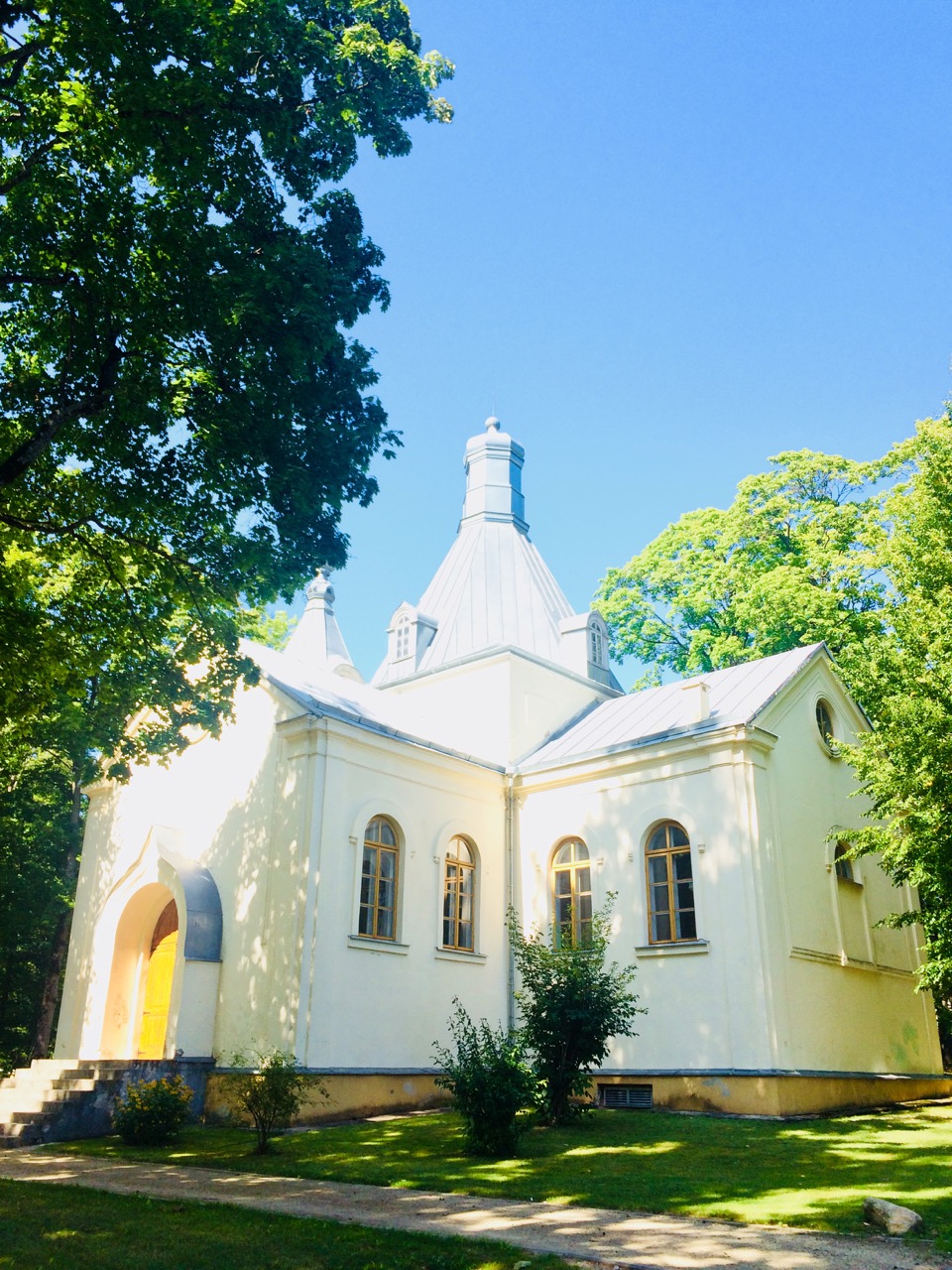
Neither of us are fit and 20 miles was plenty.
Dinner went down very well, and as the sun is setting I think we’ll be under the covers before 9.30pm.
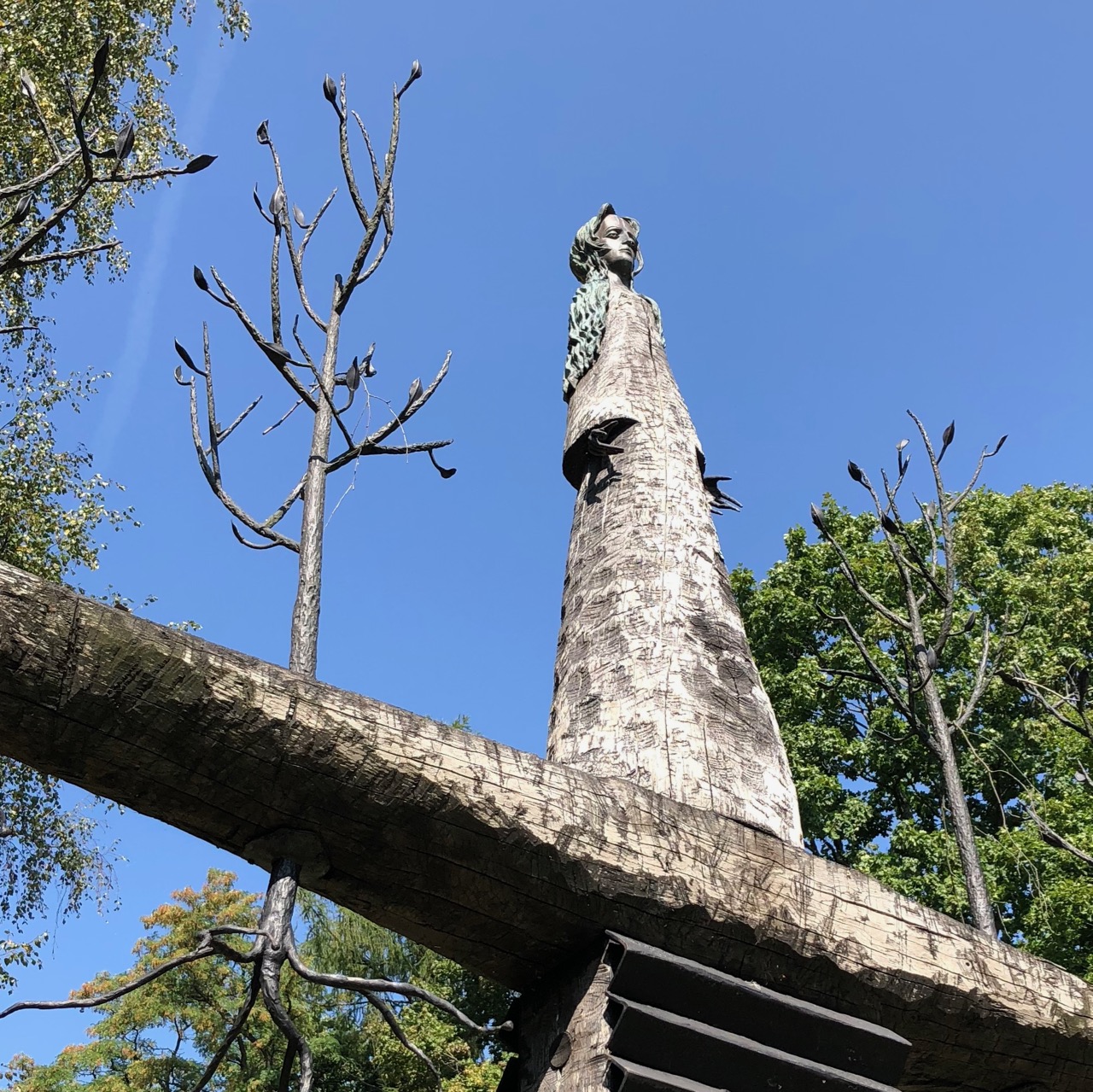
Kaunas.
We’re building up to Vilnius.
Klaipeda is the third city. Kaunas is the second, and it’s quite a place.
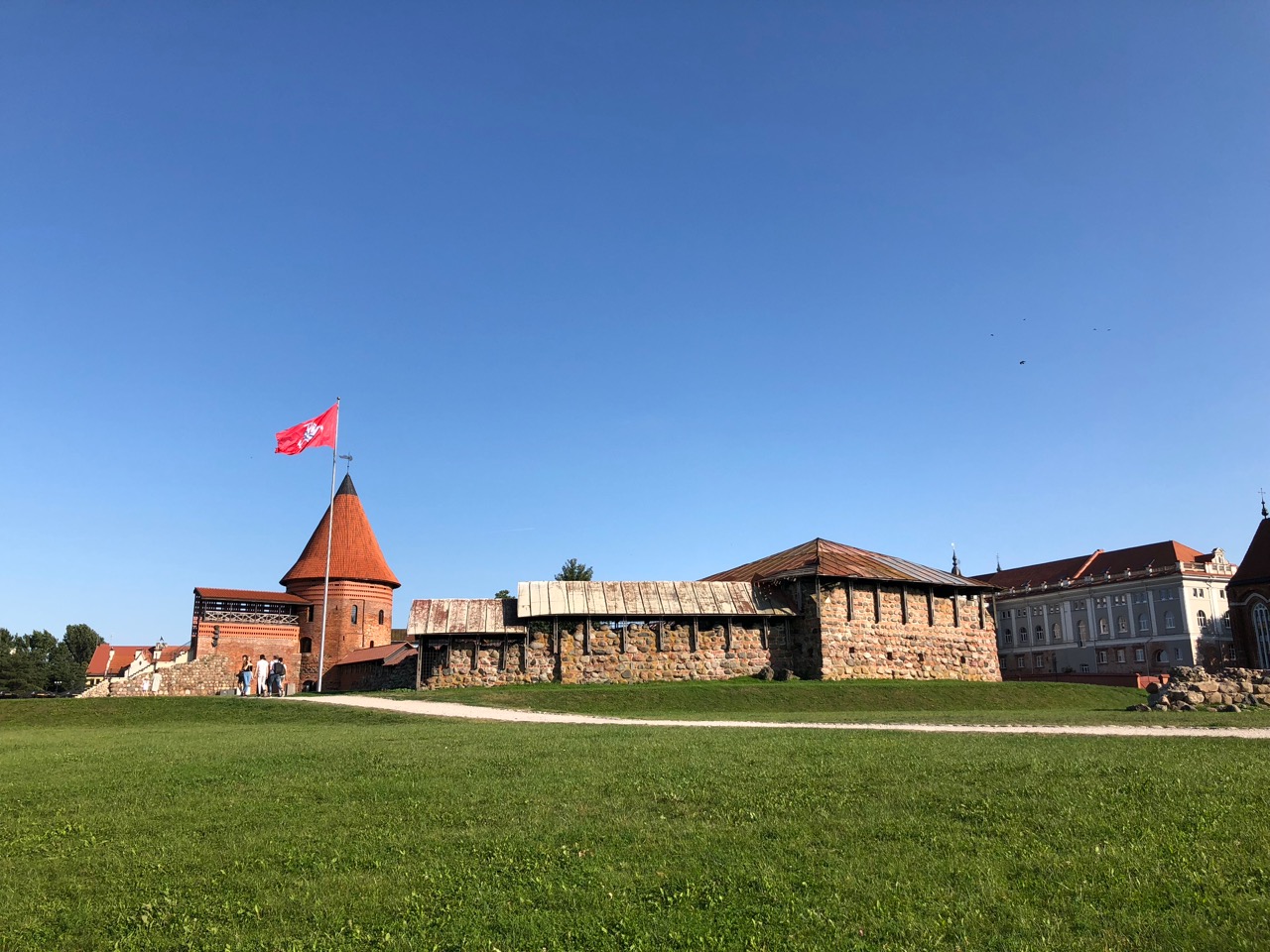
At the confluence of the Neman and the Neris rivers the city has a lake outside its gates, a dramatic castle, a fine old town and a decent modern centre too, all within walking distance.
It’s currently having a major spruce in anticipation of the Pope’s arrival at the end of September, and the newer part of town is pretty much being rebuilt.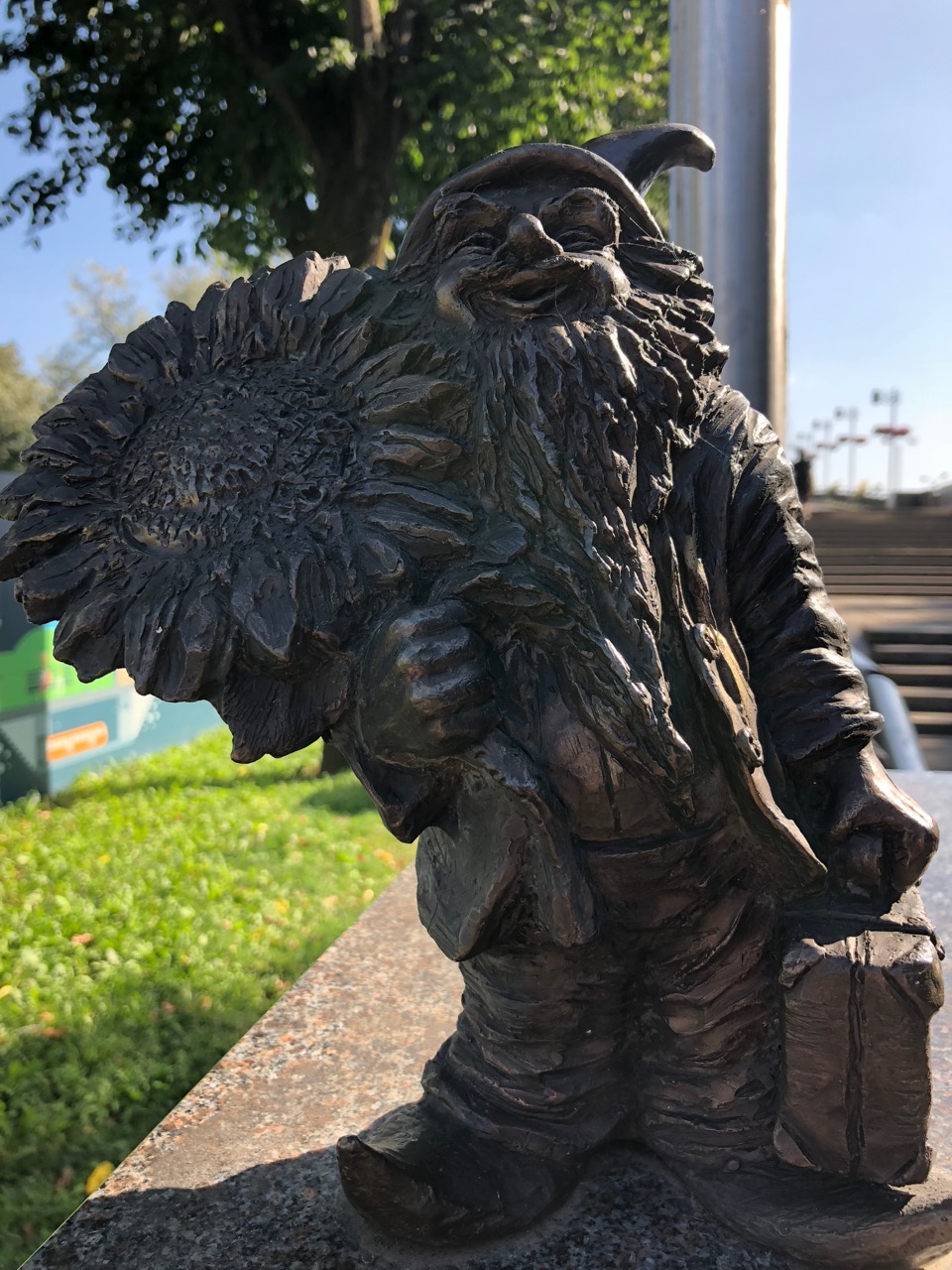
That left it noisy and dusty, but still it’s a beauty.
The modest (by cathedral standards) St Peter and St Paul has an uninspiring gothic brick exterior, but it’s well worth a visit. Inside the stucco, the gold, the nine altars and the chandeliers are all far from modest.
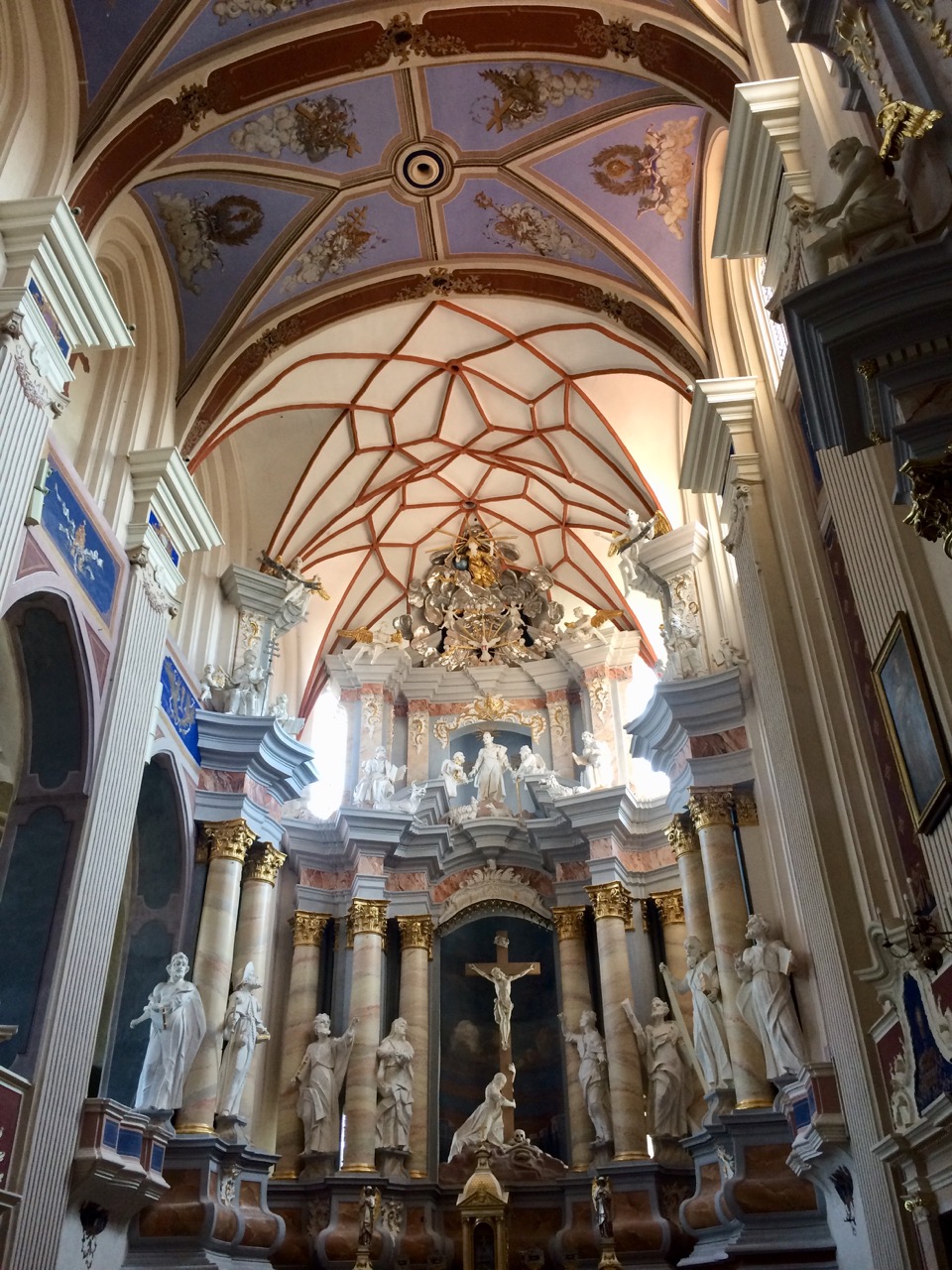
Craftsmen were working away with painstaking detail getting everything ready for Il Papa, and outside even the two beggars seemed to fit the picture.
Many places come alive at night in Lithuania, and Kaunas went for it big time!
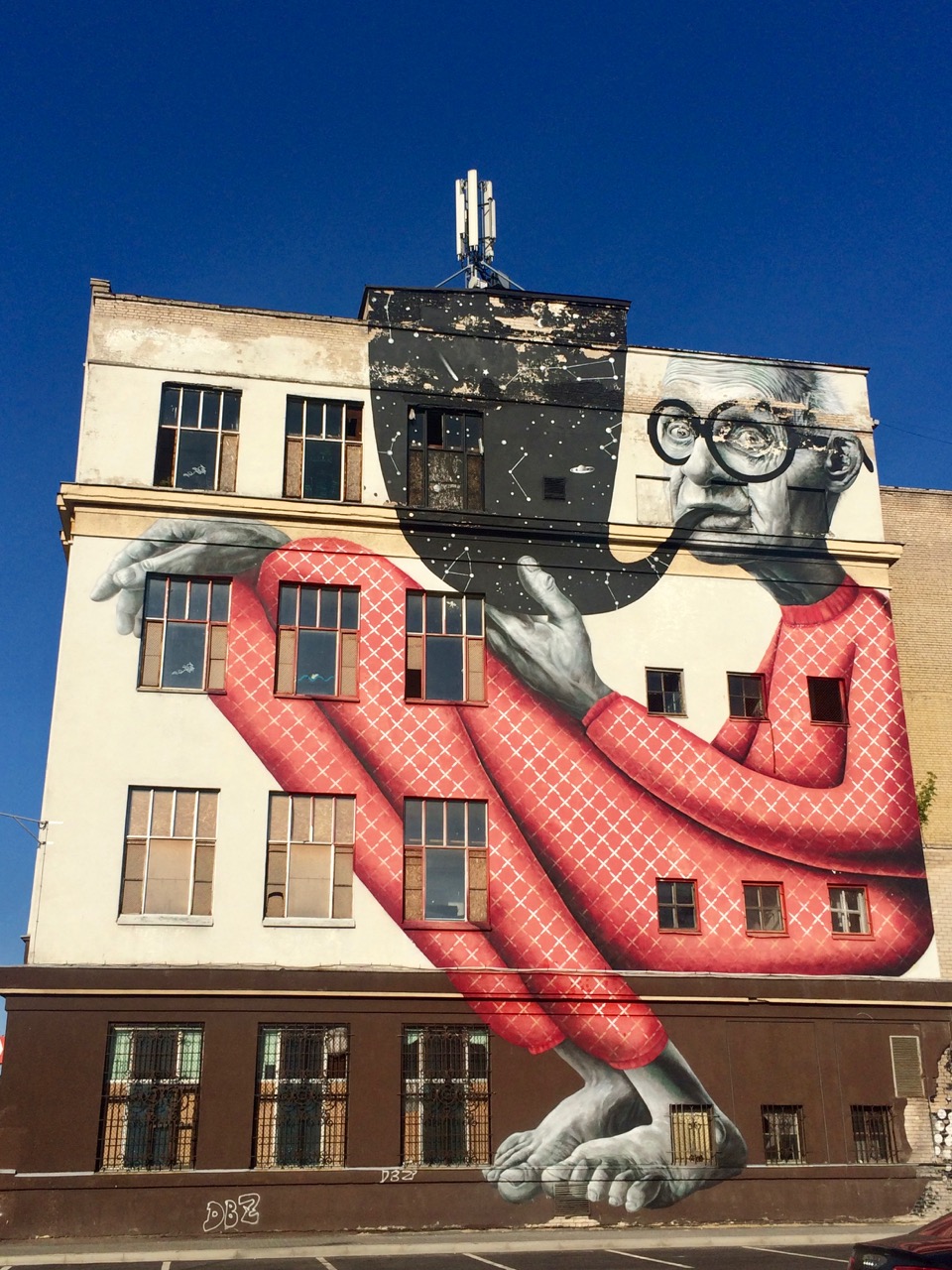
Every space in the old town was packed with people drinking and dining late on, and spirits were high. It was a lovely sight.
By midnight our car park was packed and the young were out in their fancy cars with some fancy sound systems too. There used to be a German craze for mega bass speakers in cars, and perhaps it’s happening here. One car pulled up several spaces along from us had the inside of ArchieVan vibrating to its deeper notes.
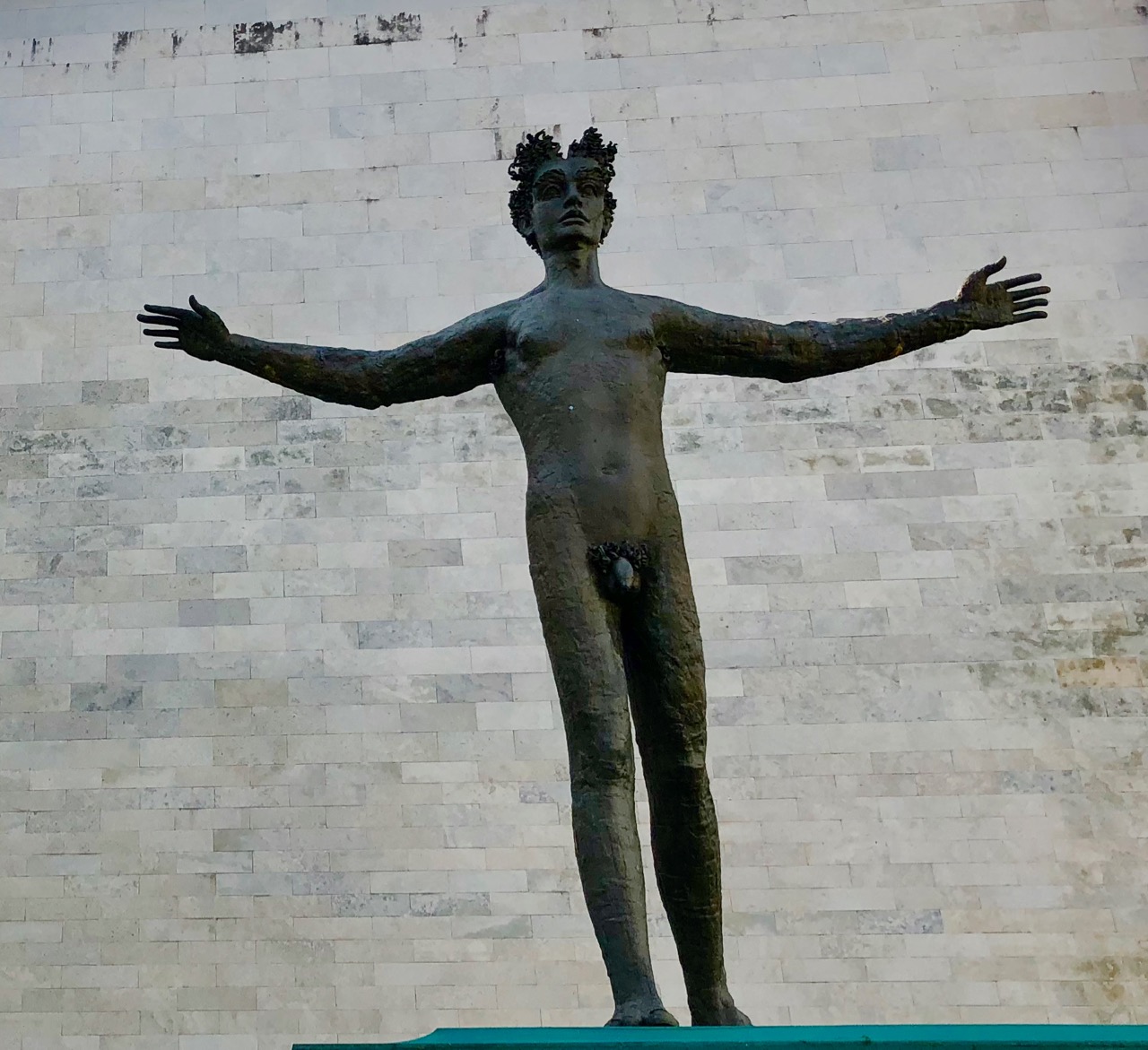
Kaunas felt like a fun place to be, and it is certainly thriving.

The capital.
Many friends have suggested that Vilnius is their favourite of the three Baltic capitals. That left me a little nervous about whether I’d like it too.
I needn’t have been.
Vilnius is superb and easily the most beautiful city we have visited on this journey.
I know that now – but getting that knowledge took effort.
Arriving was hard. Very hard.
We’d rented a flat right in the centre of the Old Town (it’s on this link, another from Airbnb). It’s far from perfect, but it is definitely good.

The temperature was knocking on 30 degrees and we were tired, and hungry.
Heading to the heart of any major city is fun.
Doing it when already flagging and in the heat, in a 7m long van, when there is a major event happening and police have diversions all over, well, that was quite a challenge.
We then found that the flat’s parking area was rammed full with cars.
The scream in my head was growing louder.
Thankfully we had the sense to drop Polly in the (relatively) cool flat.
We then headed out for an hour and a half trying to find somewhere to leave the van.
15 point turns.
Traffic.
One ways.
Nothing to give the navigation a clue on, and so mostly random driving.
Extremely narrow streets in the oldest parts of town.
But we kept our calm.
We parked less than a kilometre away in the end, and we’ll leave it there until it’s time to go on Monday.
Before thinking of anything else we found a little supermarket for instant hit food, beer, fizz and vodka.
Then it was time to start enjoying the location.
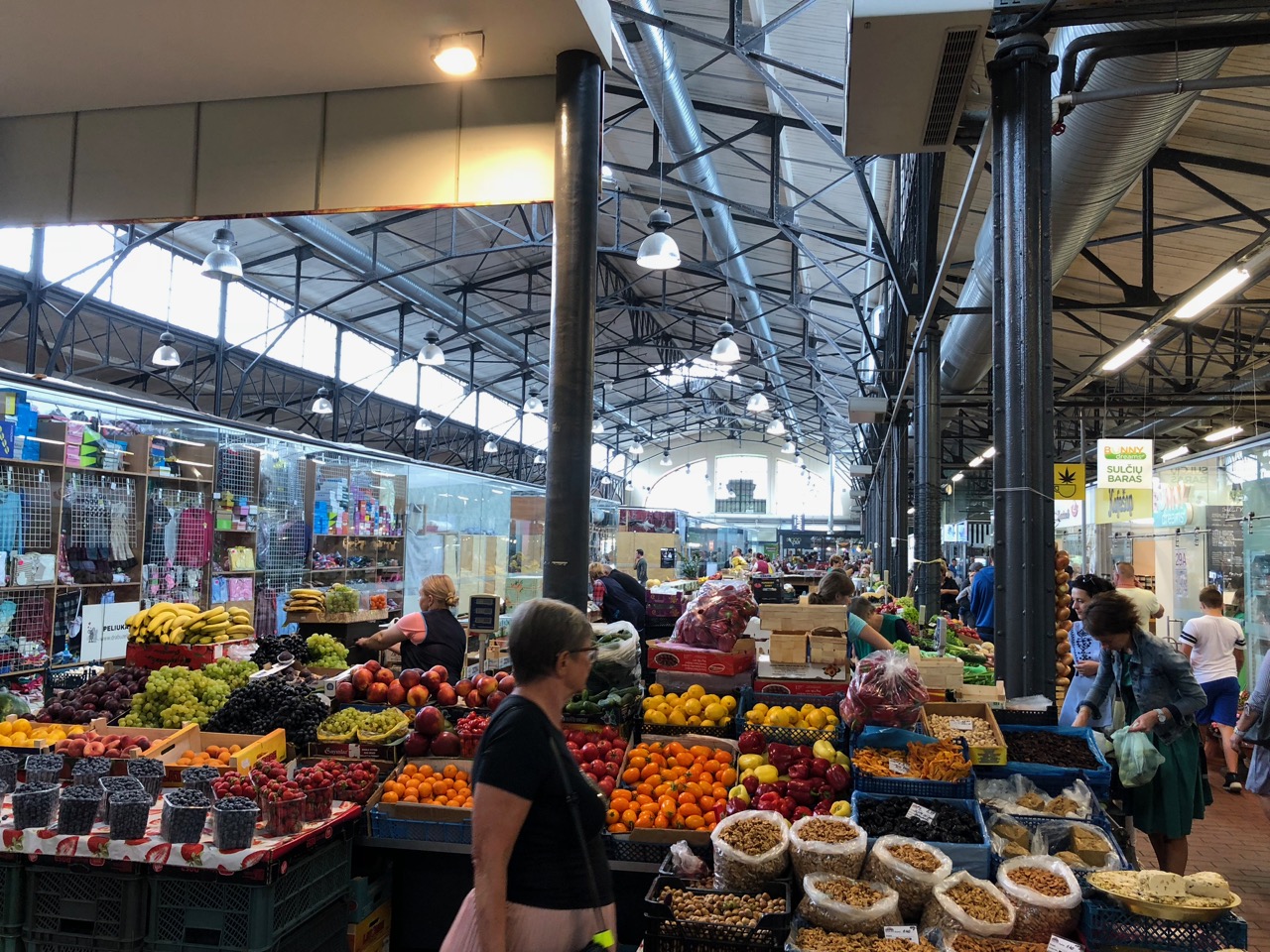
Saviciaus.
The apartment is just off Saviciaus, the oldest street in the Old Town.
A street built for us!
Bars that serve excellent pizza.
Fantastic beers at very sensible prices.
And the haunt of all the beautiful people of Vilnius who ease their tired legs after serious shopping in Armani and Burberry just around the corner. (Cornish tartan bags in Burberry! Whatever next?).

At 7pm on the dot the bar staff march into the street with tables, closing it to traffic, and the party begins.

Our walking tour encompassed much of the city, its beautiful buildings, market, and some good cafés too.
My favourite bit though is a calmer neighbourhood – Uzupio.
Polly and I stumbled upon Uzupio on our Saturday morning amble, and stopped for an excellent coffee in the square.

Little did we know that we’d arrived in a self-declared republic until we found its excellent constitution on the wall with strong relevant conditions including:
- Everyone has the right to make mistakes.
- Everyone has the right to look after the dog until one of them dies.
- No one has the right to have designs on eternity.
- Everyone has the right to cry.
On one day a year passports are required (and stamped) to enter the republic.

It’s a most arty, creative and fine place to be. So Polly and I went back for coffee again today.
I imagine St Just taking a lead, making Rich Guy king for the day, passport checks at Terry’s garage, and constitution laws including numbers:
- The right to eat a pasty from a bag, but not with a knife and fork (cut yer ‘and av ee?).
- The right to drink in Pendeen once a month.
- The obligation to greet everyone you meet with a low indistinct grumble of “Right On” that confers everything you need to say about your health, the weather and the key topics of the day.
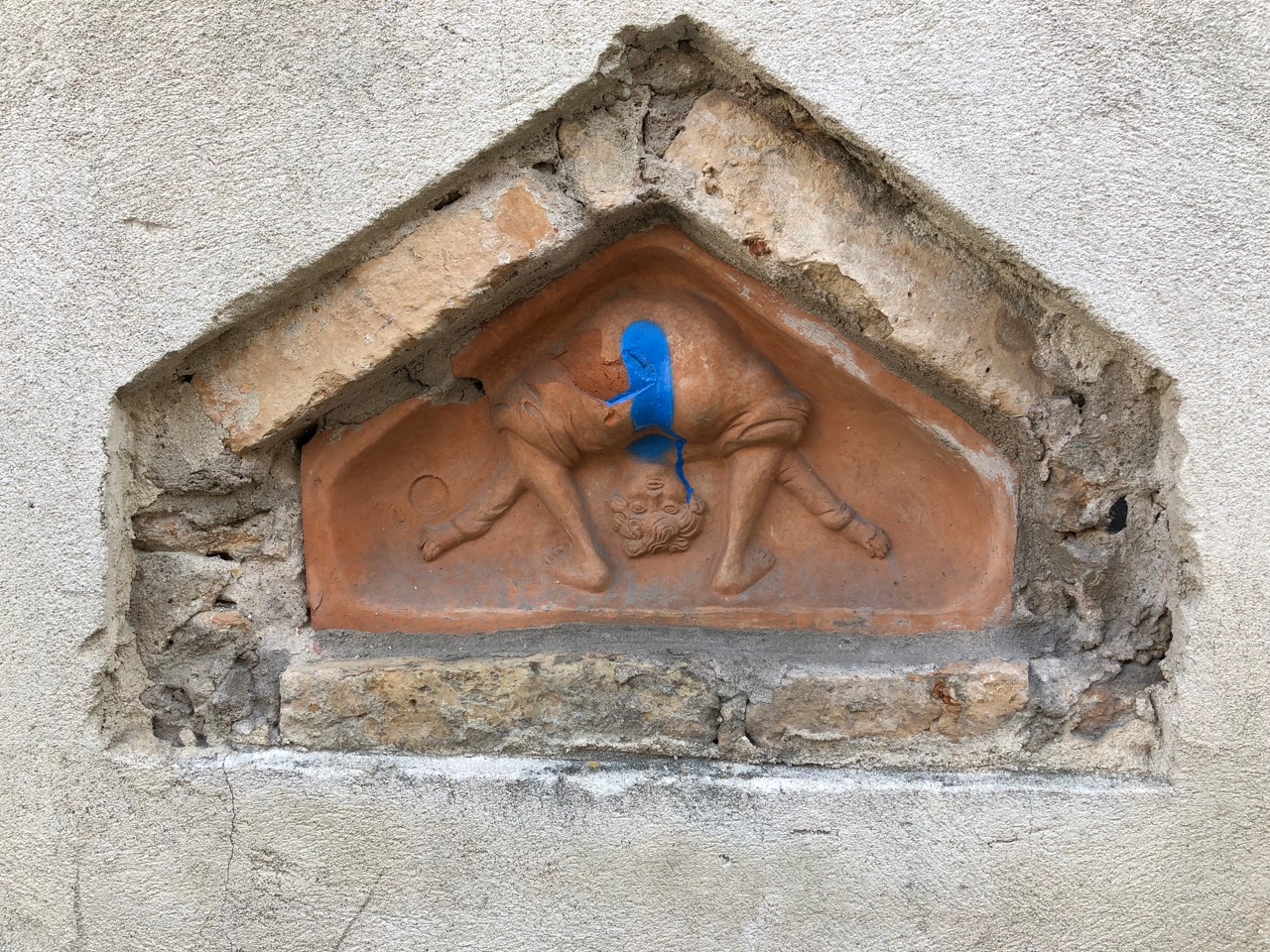
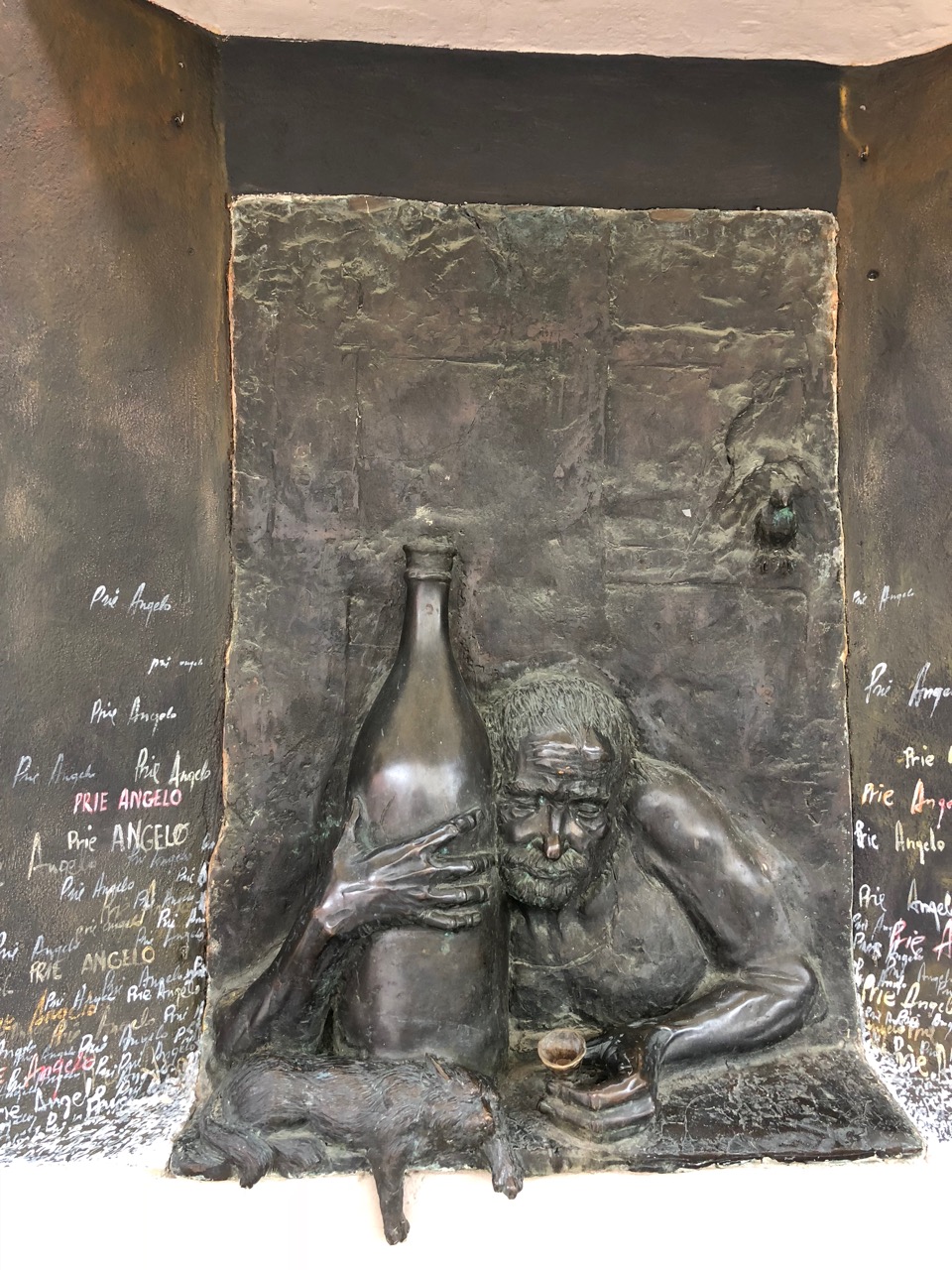
Lithuania, taken on our vaguely anti-clockwise route builds gradually to its jewel.
Its countryside is hardly wild, but it does have more roll than the previous two Baltic states.
What we saw of the coast was pretty and a little more dramatic including a hint of cliffs.
The mix of agriculture and forest is enough to be interesting, and the farming itself includes small scale inefficient plots where produce is sold at stalls, to huge scale monoculture where monster combines were harvesting as we drove through.
Whenever we’re reminded of what Lithuania, Latvia and Estonia have been through in the last century we’re amazed at how well rounded the three are. They have only been independent from the Soviet Union for less than three decades, yet the vibrant cities would all make great places to live. The countryside is calmer, probably still more suspicious, and certainly less developed. Overall the change is immense, and it hasn’t finished yet.
We have enjoyed all three Baltic states, but now we’re looking forward to Poland next week.
Belt up. Here we go.
ps: if you like our photos there are a whole lot more on our Instagrams MintyCollins and ArchieVanCornwall.


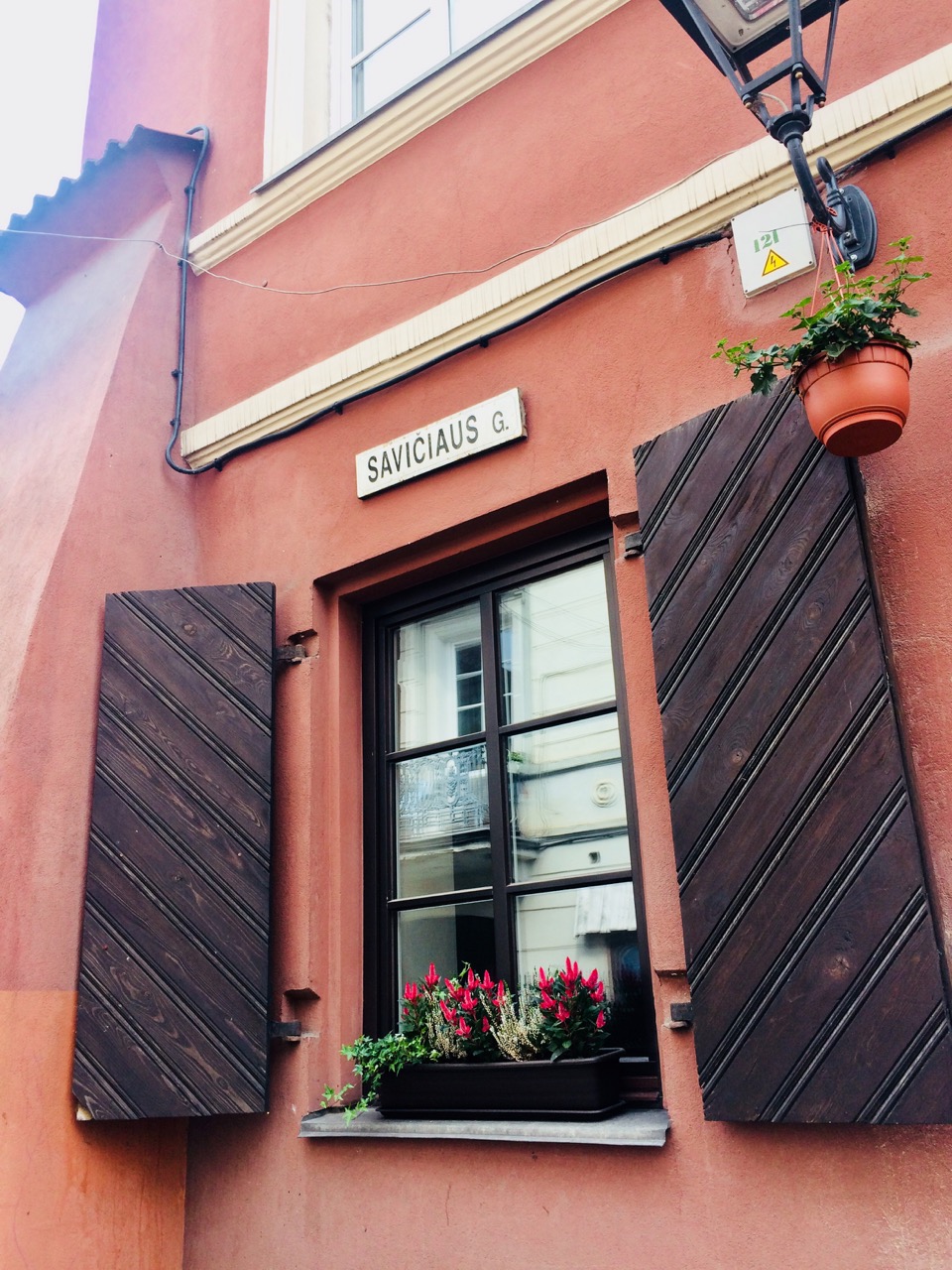


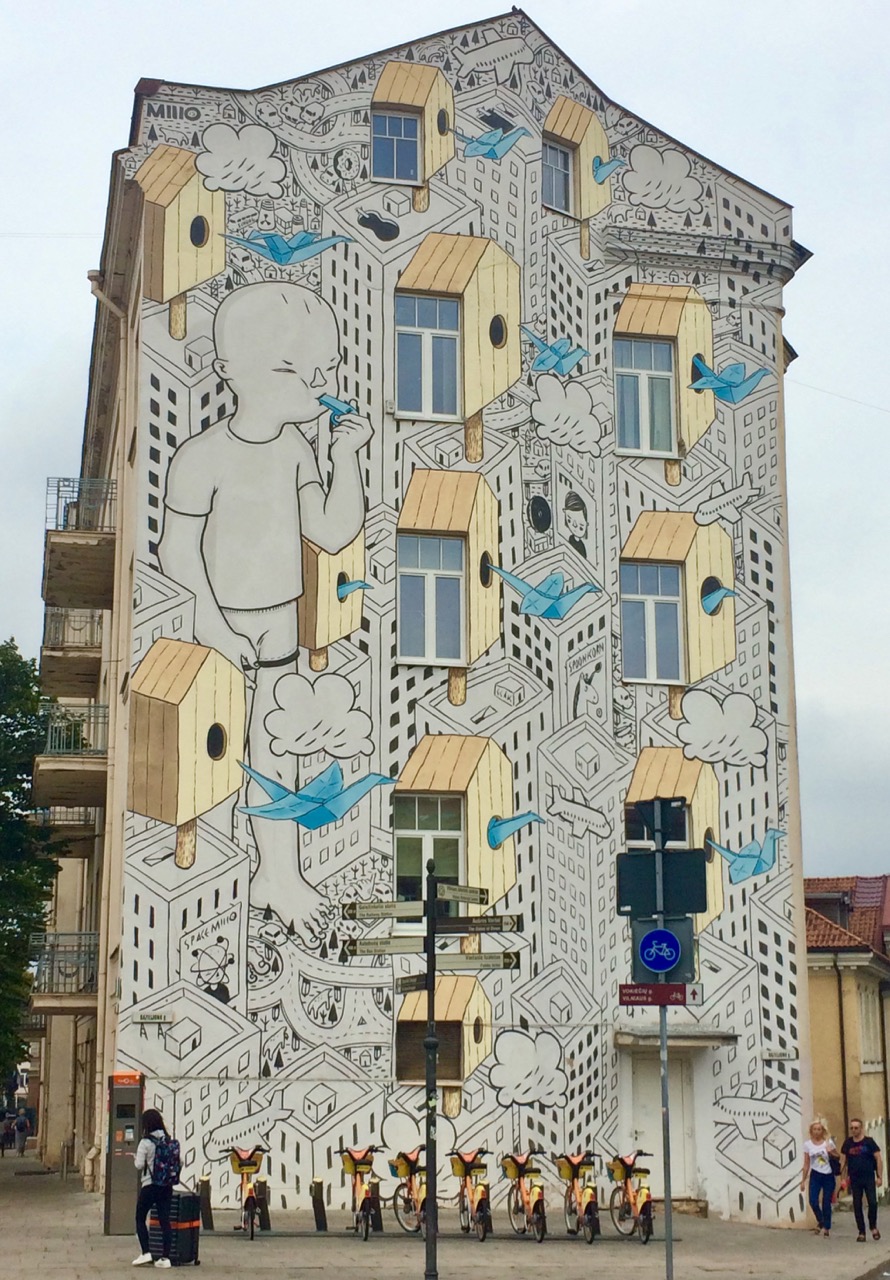



Another great post, I’m really jealous. Looking at archie van, my first car was 746 OCV. Cheers Mike
We’ve been swopping 841 OCV between cars for 20 off years now. It means something to ever fewer people and I like that about it. KC
This is great and had me chuckling out loud by the end. Polly seems to have been looking after the apartment with a great sense of ownership!
I think she was glad of her rest, we get tired with this travelling business and I expect she does too.
Have just read you latest episode and wow…I will have to go back and read it again. So much going on in Lithuania and civic diversity around every corner.
I loved The Hill of Crosses but the Cold War Museum made my skin crawl.
Your story telling beats all and just makes for investigating further.
Apartment looks good and a desk, bed and cool floor to lie on what else can you ask for on your 20th anniversary.
Keep the sagas coming!!!!!
Thanks Judith. The towns were a good build up for the capital and I recommend Vilnius for a long weekend, pack your walking shoes.
Thank you for another good read, and for putting in so much background and research. Don’t ever think your hard work is wasted – there are folks back home who wake up at the weekends looking forward to the next instalment ( no pressure then… )
A
Your fine words keep me going!
I recommend Vilnius – it’s wonderful.
KC